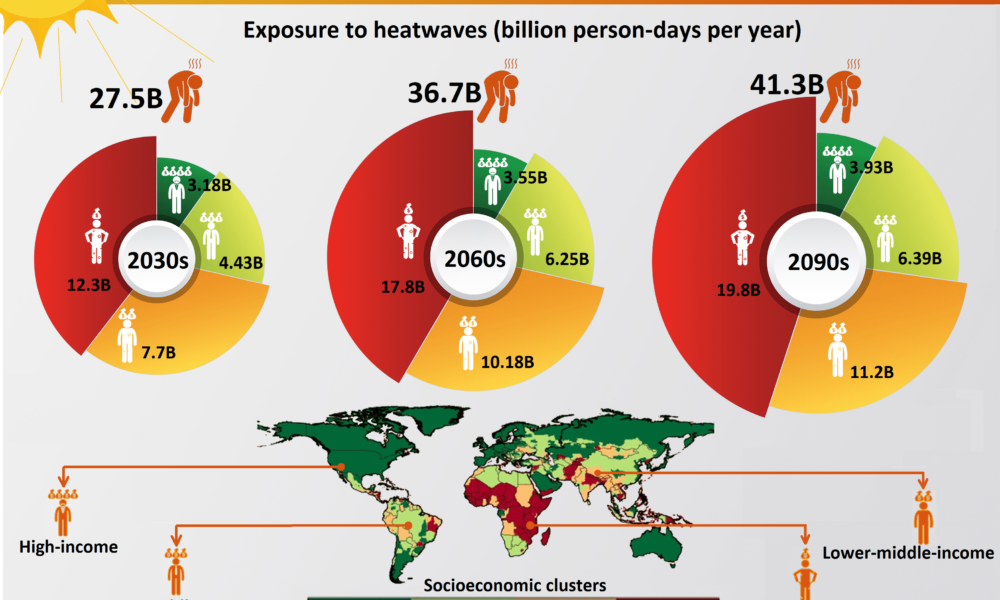With the steady rise of global temperatures on Earth, many countries are experiencing more intense and frequent heatwaves—periods of extremely high temperatures that can last from several days to several weeks.
A new study conducted in collaboration with researchers from McGill found that people in low-income countries are more likely to be exposed to heatwaves, and in turn, will likely suffer worse consequences in the years to come. Although it is known that heatwaves impact various communities differently, this study is the first to quantify these effects by analyzing historical data and using climate models to project future temperatures. Different socio-economic factors, such as the availability of electricity needed to cool buildings down, were incorporated into the estimate of how well a country can adapt to heatwaves.
In an interview with The McGill Tribune, Mohammad Reza Alizadeh, a McGill PhD candidate in bioresource engineering and lead author of the study, explained that heat exposure is unequally divided between countries with different socio-economic statuses. While some countries with more resources are able to combat the heat, many lower-income ones lack the infrastructure necessary to do so.
“Water supply, housing technologies, and cooling systems […] all compound and exacerbate the difficulties associated with heatwaves,” Alizadeh said.
The researchers found that in the last decade, countries with lower per capita gross domestic product (GDP) had more than 40 per cent higher exposure to heatwaves compared to countries with higher individual economic output. This is largely due to a comparative lack of resources—including capital, infrastructure, and policies—all of which can be put toward mitigating climate change risk. Looking ahead, the study projects that many of these lower-income nations will experience up to five times more exposure to heatwaves by 2060.
It comes as no surprise that countries with more access to water and electricity to power fans and air conditioning are better-situated to deal with heatwaves. In contrast, many developing countries lack these resources, resulting in higher mortality rates during extreme weather events.
High temperatures can cause heat exhaustion and heat strokes—conditions that can damage major organs in the body. During this past summer alone, nearly 600 people died in British Columbia from heatwaves, and countries like Argentina and Paraguay experienced temperatures rocketing up to 45 degrees Celsius. Sustained periods of exposure to extreme temperatures can also cause the loss of crops and livestock, further straining food security. Moreover, hot and dry conditions often encourage wildfires, which impact air quality with their release of ash and smoke—irritants that can damage the lungs and exacerbate heart conditions.
Although lower-income nations are most affected by heatwaves and other natural disasters produced by climate change, wealthier nations such as China and the U.S. are responsible for the majority of greenhouse gas emissions. To address this inequality, developed countries have pledged to provide $100 billion USD a year to help developing countries. These funds could help low-income nations invest in the infrastructure and technology needed to adapt to extreme temperatures such as cooling systems. But so far, this goal has not yet been reached—most developed countries have failed to meet their own emissions targets, let alone implement measures elsewhere.
“We need to reconsider the infrastructures, urban design, systems, policy options […] to be adapted to the pace of climate change that is getting faster and faster,” Alizadeh said.
According to Alizadeh, solutions such as heatwave warning systems can allow communities to prepare for extreme heat events, thereby minimizing their harmful effects. Because early season heatwaves in particular are hard to predict, it is essential that governments raise awareness and design systems to allow those in high-risk areas to prepare for extreme weather conditions.









